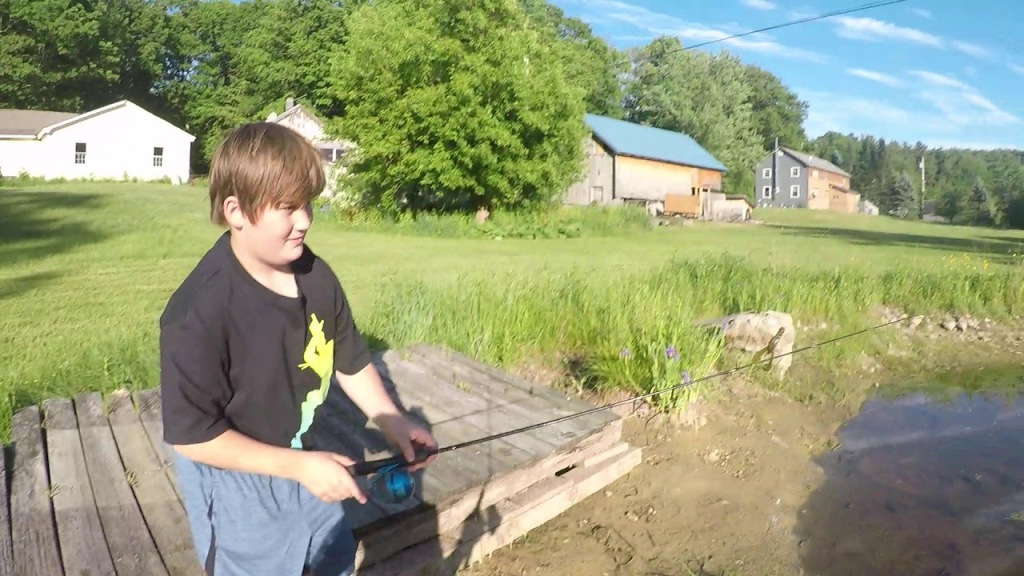The tranquil and secluded ponds found on homesteads offer a unique opportunity for fishing enthusiasts to enjoy the serenity of nature while casting their lines. In this article, we will explore various aspects of fishing in remote areas, from techniques and tactics to regulations and conservation practices.
One popular method used by rural anglers is jug fishing. This technique involves tying a line with bait onto a floating jug or bottle and letting it drift in the water. When a fish takes the bait, the jug will bob up and down, indicating a catch. Jug fishing is effective because it allows you to cover more ground without having to constantly monitor your rod.
To increase your chances of success when fishing on your homestead, consider using natural bait and lures found on your property. Worms, insects, and even small frogs can be collected from around ponds or gardens as tempting treats for fish. Additionally, experimenting with homemade lures crafted from feathers or pieces of fabric can also yield positive results.
Understanding weather patterns is crucial when planning a fishing trip in rural areas. Fish are highly influenced by changes in barometric pressure, temperature fluctuations, and wind direction. Keep an eye on weather forecasts before heading out as certain conditions may make fish more active or less likely to bite.
When venturing into remote locations for fishing purposes, it’s important to familiarize yourself with specific regulations and permits that apply to those areas. Some regions may have restrictions on certain species or require special permits for access or harvesting activities. Familiarize yourself with local laws to ensure you’re compliant while enjoying your time outdoors.
For those interested in sustainable practices, setting up a fish hatchery can be an exciting project on your homestead. By raising fish from eggs until they reach maturity, you can maintain healthy populations within your own pond or release them into nearby bodies of water if permitted. This not only ensures future catches but also contributes positively towards ecosystem balance.
Exploring secluded lakes and rivers with a kayak or canoe is an excellent way to access hard-to-reach fishing spots. These watercraft offer maneuverability, allowing you to navigate through narrow channels and shallow areas that larger boats cannot reach. Additionally, they provide a more immersive experience in nature, enhancing the overall fishing adventure.
When it comes to fishing knots, there are various types that serve different purposes. The Palomar knot is one of the most reliable and easy-to-tie knots for securing hooks or lures. The improved clinch knot is another popular option for attaching your line to terminal tackle. Learning and mastering these knots will improve your chances of successfully landing fish while minimizing the risk of losing them due to weak connections.
While many anglers focus on catching well-known species such as bass or trout, there’s a whole world of lesser-known freshwater fish waiting to be discovered. Species like catfish, crappie, or sunfish can offer exciting challenges and delicious meals when cooked properly. Expand your culinary horizons by learning about different cooking techniques suited for these lesser-known fish varieties.
Night fishing in secluded lakes or rivers adds an extra layer of excitement and mystery to your angling adventures. Some species become more active during nighttime hours, making them easier targets under cover of darkness. Ensure you have proper lighting equipment and follow safety precautions when venturing out at night to make the most of this unique fishing experience.
Lastly, regardless of whether you plan on keeping or releasing caught fish in remote areas, it’s crucial to handle them safely and with care. Wetting your hands before handling fish helps protect their delicate skin from damage caused by dry hands rubbing against scales. Use needle-nose pliers or specialized tools for hook removals to minimize harm before gently releasing the fish back into its natural habitat.
Fishing in secluded ponds on homesteads offers a peaceful retreat away from busy city life while providing ample opportunities for outdoor enthusiasts to hone their angling skills. By incorporating various techniques, respecting regulations, and practicing conservation efforts, you can create a sustainable fishing experience that enhances the beauty of rural living.


Leave a comment